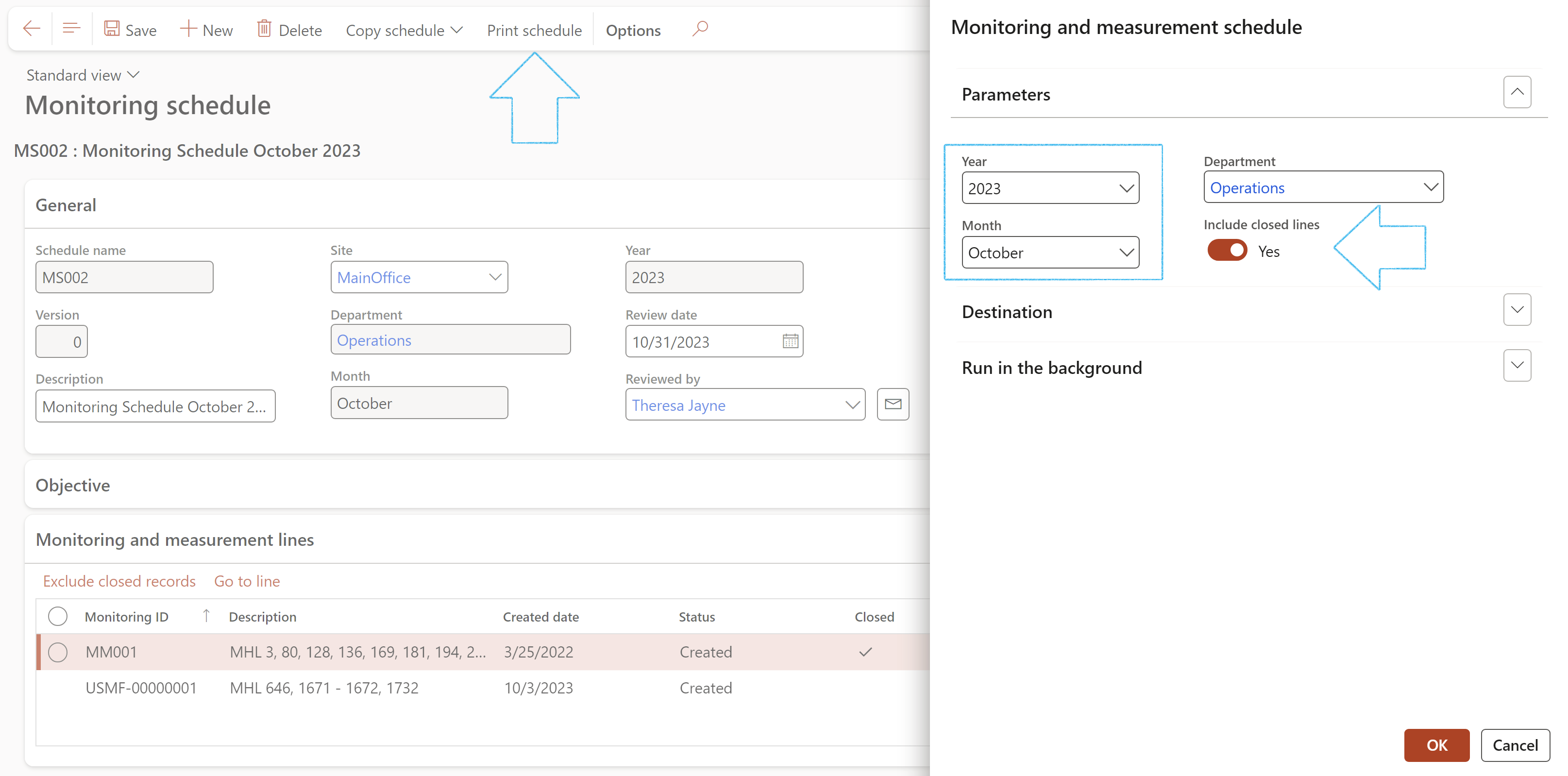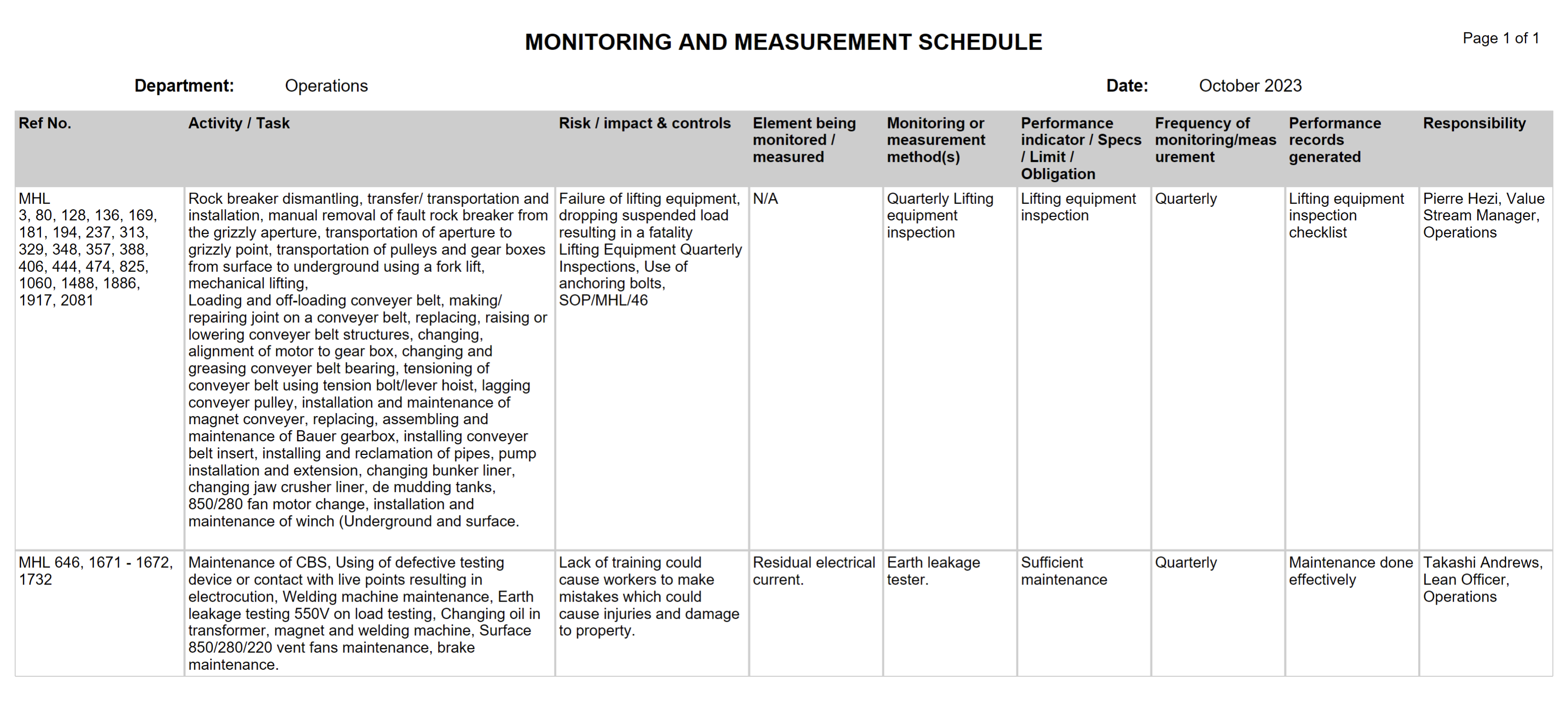
¶ Introduction
Monitoring and measurement/evaluation are the processes that allow managers to assess:
- How an intervention evolves over time (monitoring)
- How effectively a program was implemented and whether there are gaps between the planned and achieved results (evaluation)
- Whether the changes in well-being are due to the program and to the program alone (impact evaluation)
Monitoring is a continuous process of collecting and analysing information about a program and comparing actual against planned results in order to judge how well the intervention is being implemented. It uses the data generated by the program itself (characteristics of individual participants, enrolment and attendance, end of program situation of beneficiaries and costs of the program).
The existence of a reliable monitoring system is essential for evaluation.
Evaluation is a process that systematically and objectively assesses all the elements of a program (e.g., design, implementation and results achieved) to determine its overall worth or significance. The objective is to provide credible information for decision-makers to identify ways to achieve more of the desired results. Broadly speaking, there are two main types of evaluation:
- Performance evaluations focus on the quality of service delivery and the outcomes (results) achieved by a program. They typically cover short-term and medium-term outcomes. They are carried out on the basis of information regularly collected through the program monitoring system. Performance evaluation is broader than monitoring. It attempts to determine whether the progress achieved is the result of the intervention, or whether another explanation is responsible for the observed changes.
- Impact evaluations look for changes in outcomes that can be directly attributed to the program being evaluated. They estimate what would have occurred had beneficiaries not participated in the program.
Monitoring and evaluation usually include information on the cost of the program being monitored or evaluated. This allows judging the benefits of a program against its costs and identifying which intervention has the highest rate of return.
¶ Navigation
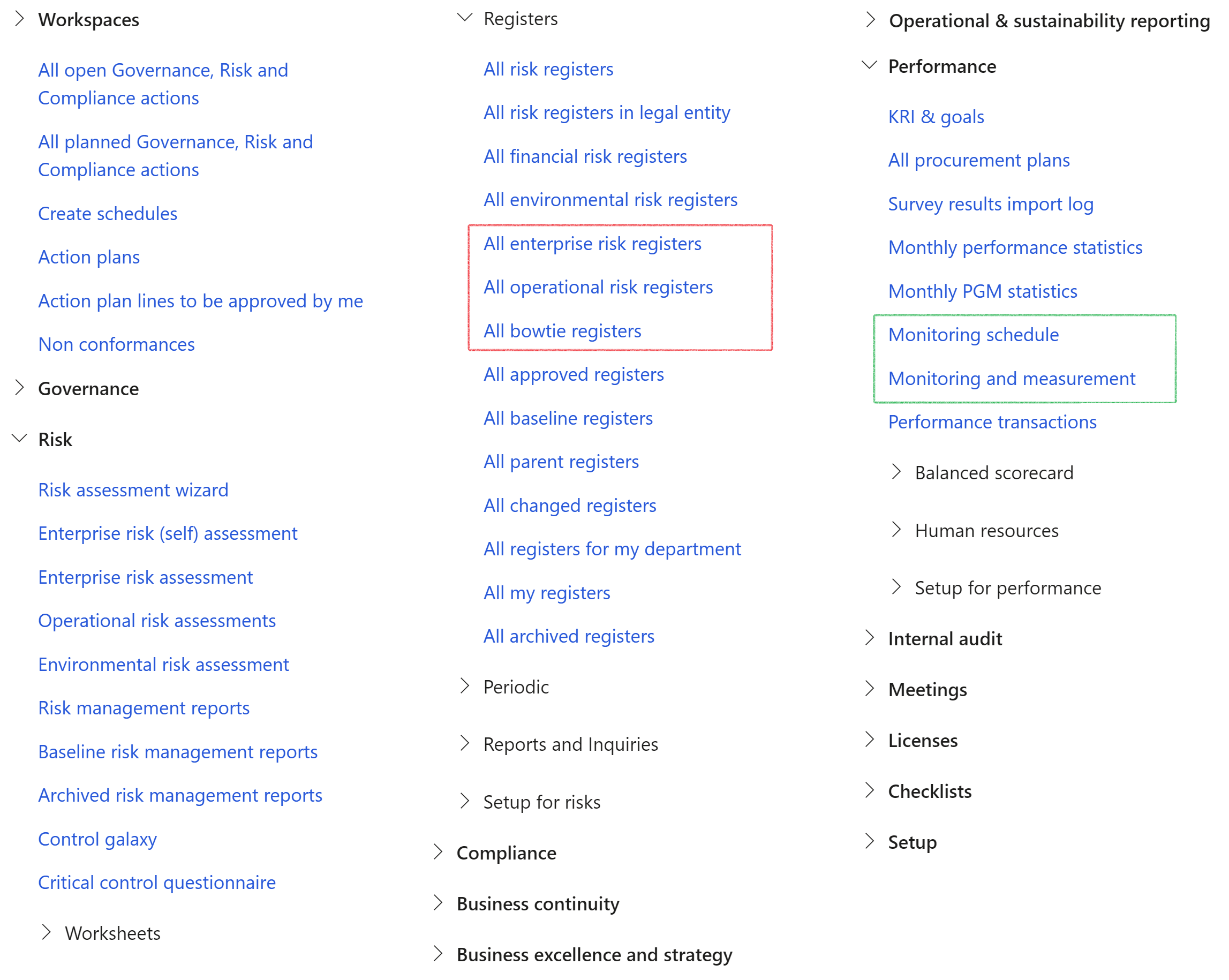
¶ Specific setups
¶ Step 1: Create Approval teams
Teams are a collection of workers (and system users) who are getting together for a temporary assignment, for example a bid adjudication committee.
Go to: HSE > Setup > Work force > Teams
OR
Go to: Organization administration > Organizations > Teams
- On the Action pane, click on the New button
- Enter a Name for the team
- Select the relevant Team type from the dropdown list

- Under the General Fast tab:
- Enter a brief Description for the team
- Select the Administrator for the team from the dropdown list
- Select Yes to indicate that this team is Active

¶ Step 1.2: Choose Team members
- In the Action pane on the Teams form, click the Team types button
- On the Team types form, select the team that you are choosing members for
- Select the relevant tick boxes under the Restrict membership to include group
- Click on the Close button
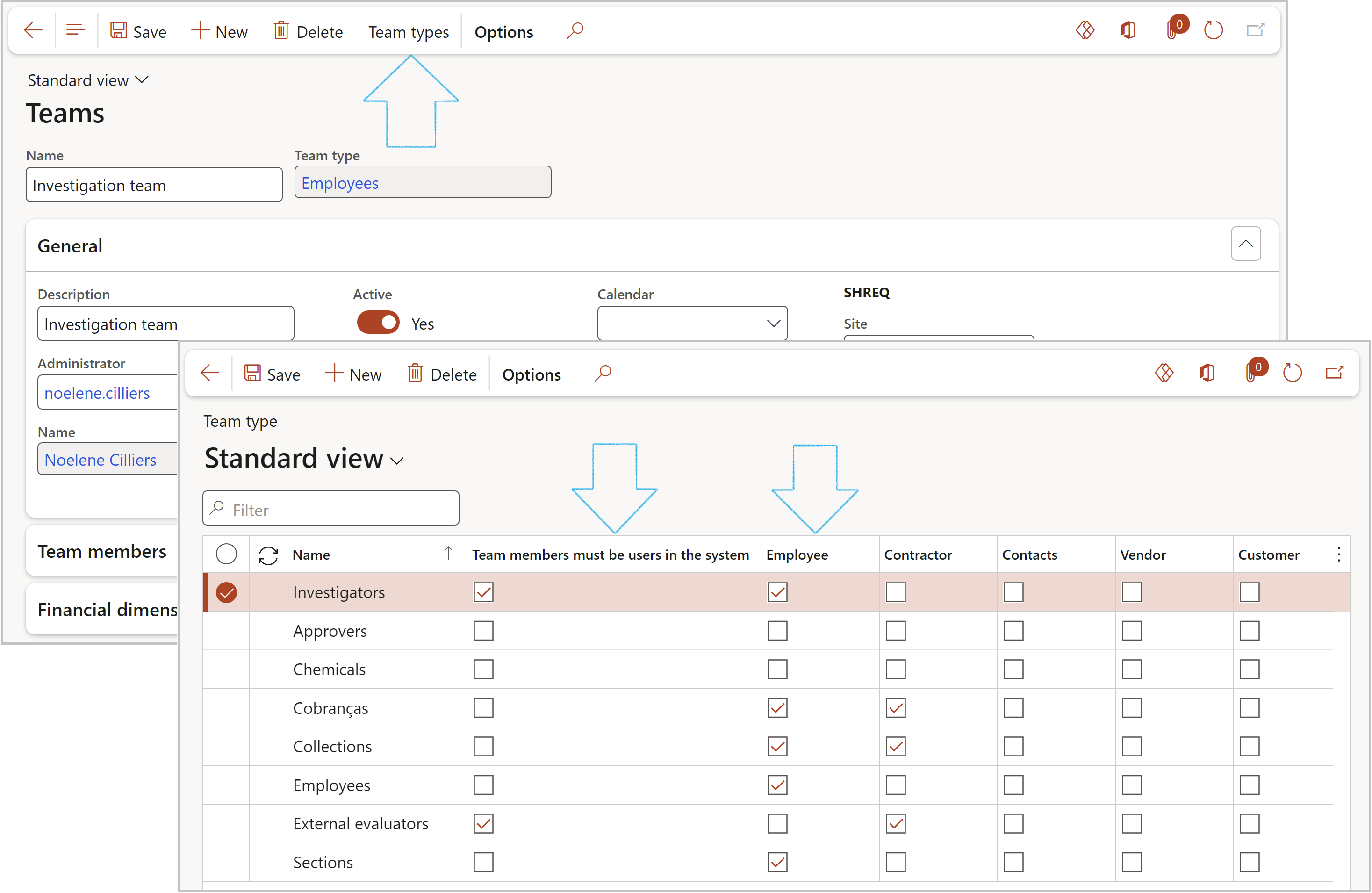
- Under the Team members Fast tab:
- In the Button strip, click on the Add team members button. The Add team members form will open
- Select people that you want to add to the team
- Select the team members and click Add
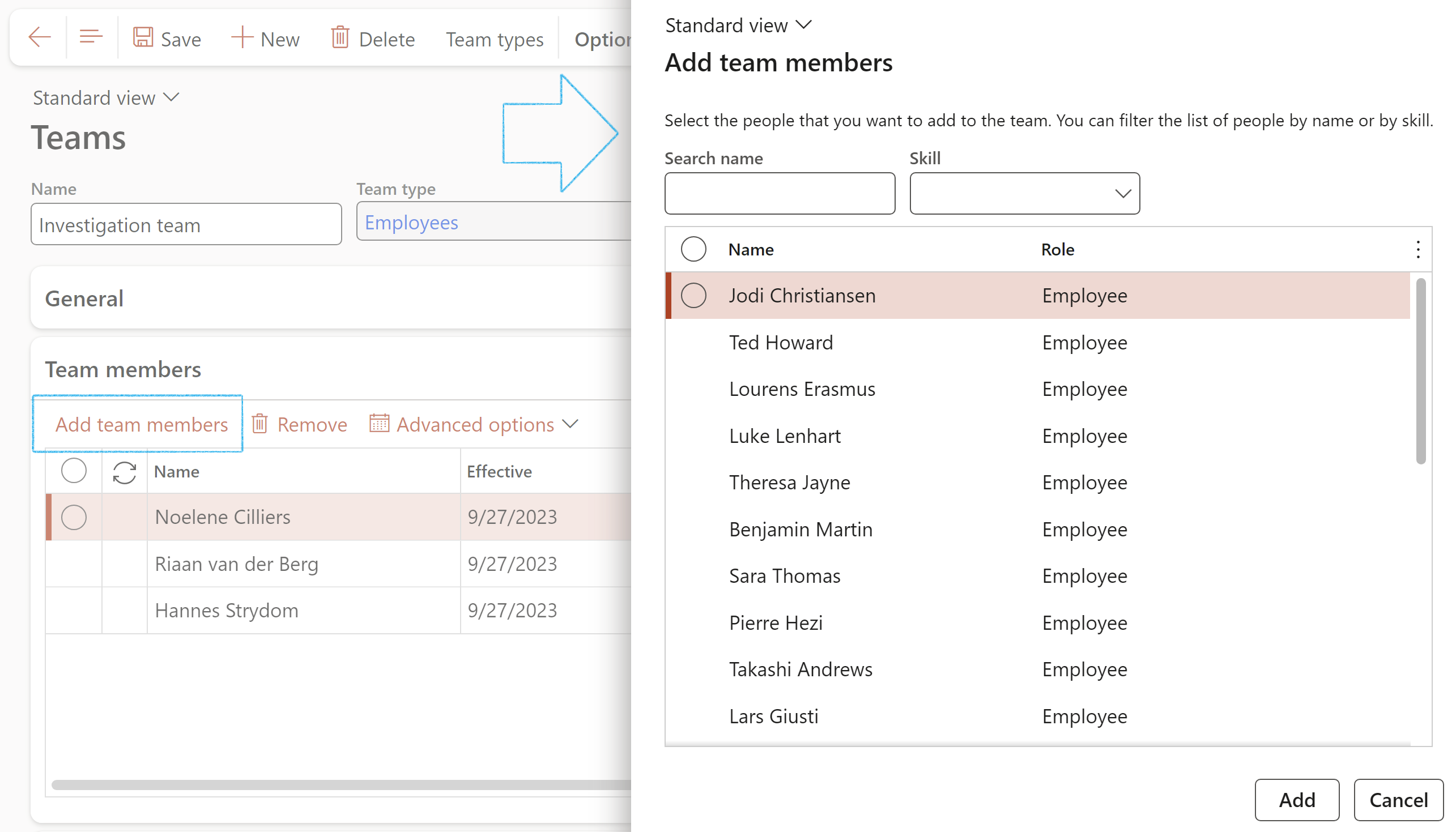
You can filter the list of people by name or by skill and add them in bulk
Select the Team leader by ticking the box next to the relevant person’s name

¶ Daily use
¶ Step 2: Monitoring schedule
Go to: GRC > Performance > Monitoring schedule
- On the Action pane, click on the New button
- On the Create new monitoring schedule dialog:
- Enter the Schedule name
- Enter a brief Description for the schedule
- Select the relevant Site from the dropdown list
- Select the relevant Department from the dropdown list
- Select the Month that the schedule is for
- Select the Year that the schedule is for
- Select the relevant Approval team from the dropdown list
- Click on the OK button
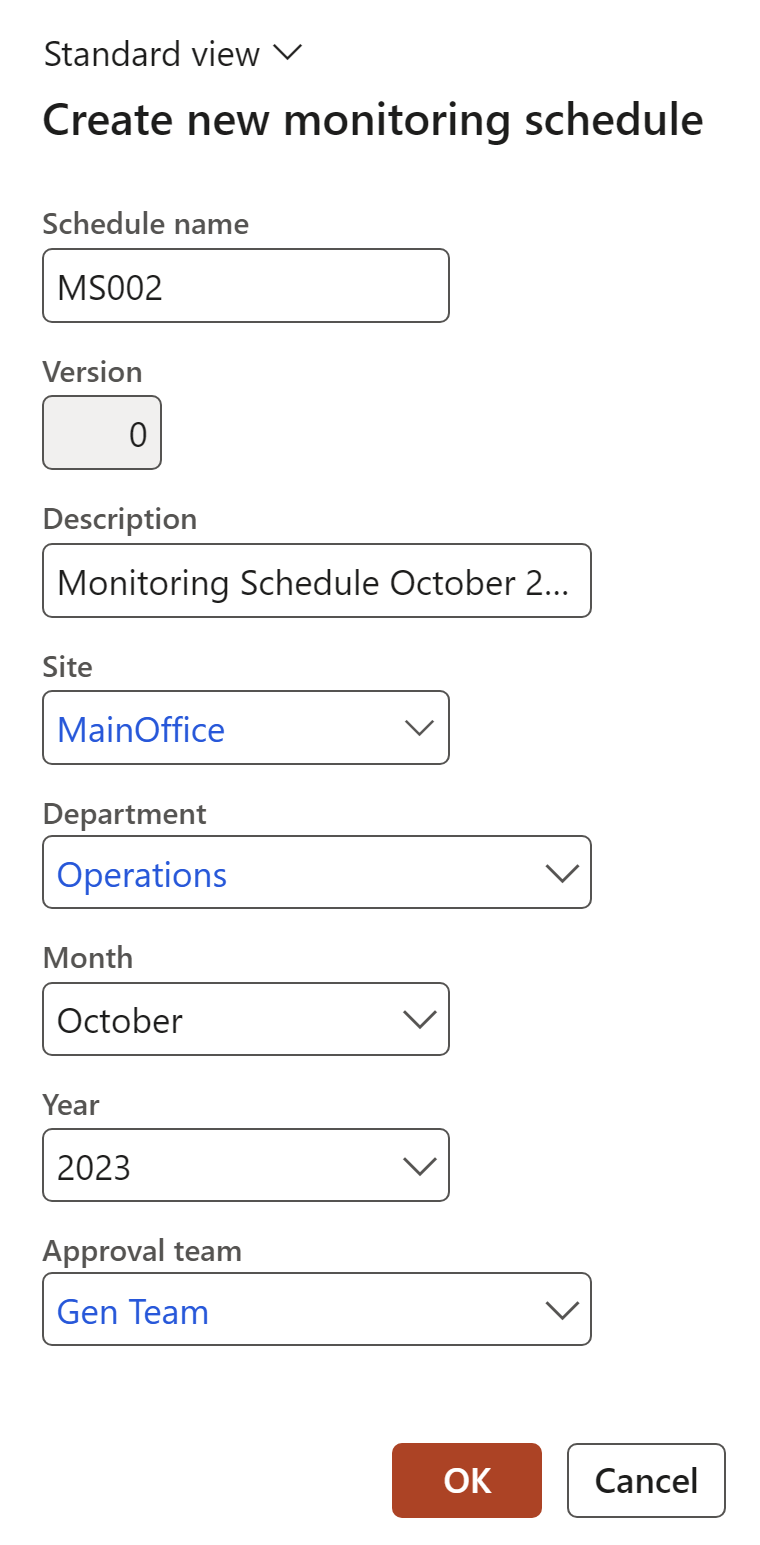
- On the Monitoring schedule, under the General Fast tab:
- Enter the Review date
- In the Reviewed by field, select the name of the worker who has to review the schedule
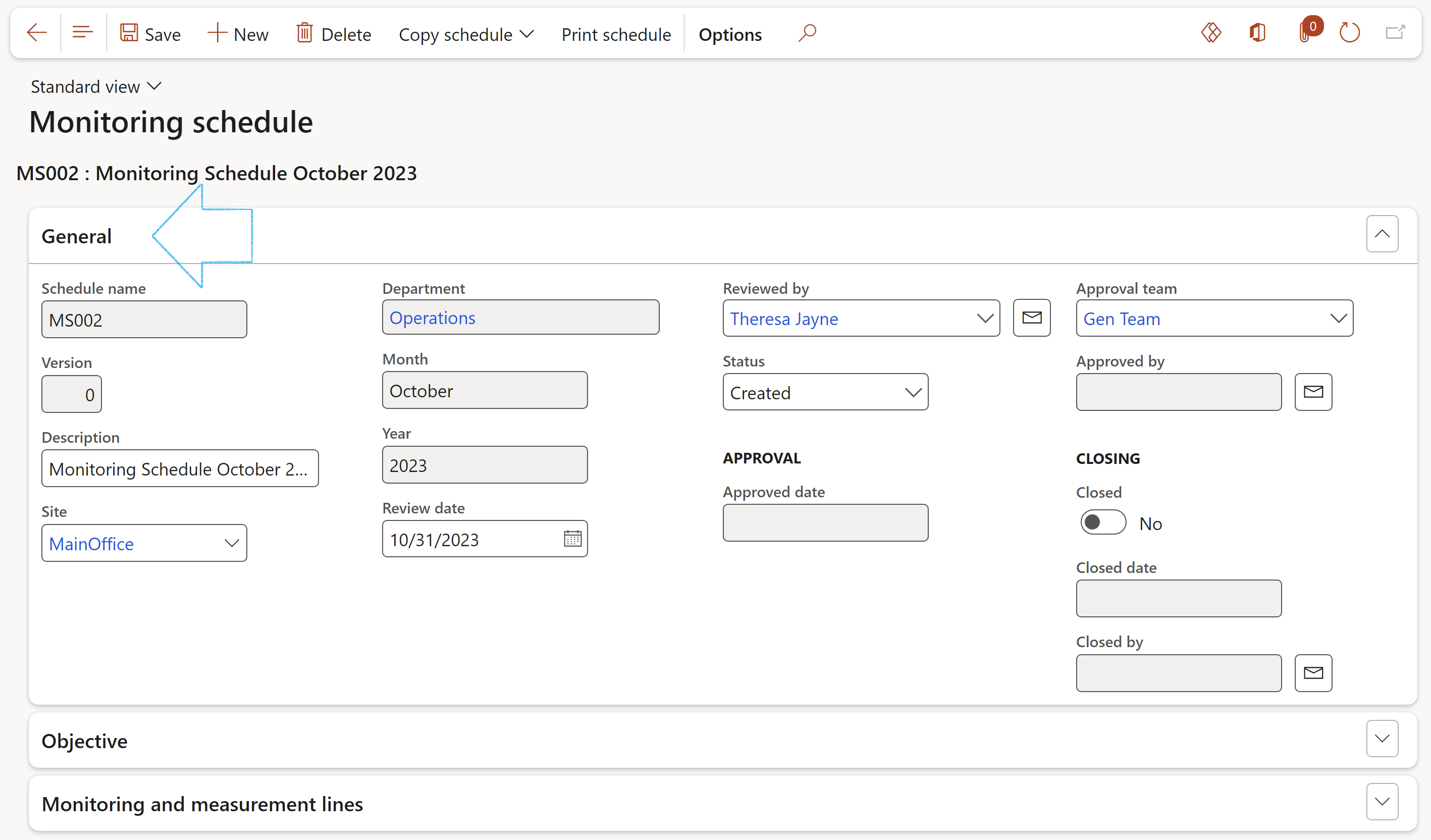
- The Monitoring schedule can only be approved by users that belong to the selected Approval team
- The Version number will change when the schedule is copied at the end of the year
- When the Closed slider is moved to Yes:
- The Closed date field will be populated with the current date
- The Closed by field will be populated with the logged in User’s name
- The record will be locked
¶ Step 2.1: Monitoring objective
- Expand the Objective Fast tab
- Enter the Objectives in the box provided

¶ Step 3: Create Monitoring and measurements lines
Go to: GRC > Performance > Monitoring and measurement
- On the Action pane, click on the New button
- On the Create monitoring measurement dialog, enter the following:
- A unique Monitoring ID
- Brief Description of the monitoring measurement
- Select the relevant Department from the dropdown list
- Select the relevant Status from the dropdown list
- Click on OK button
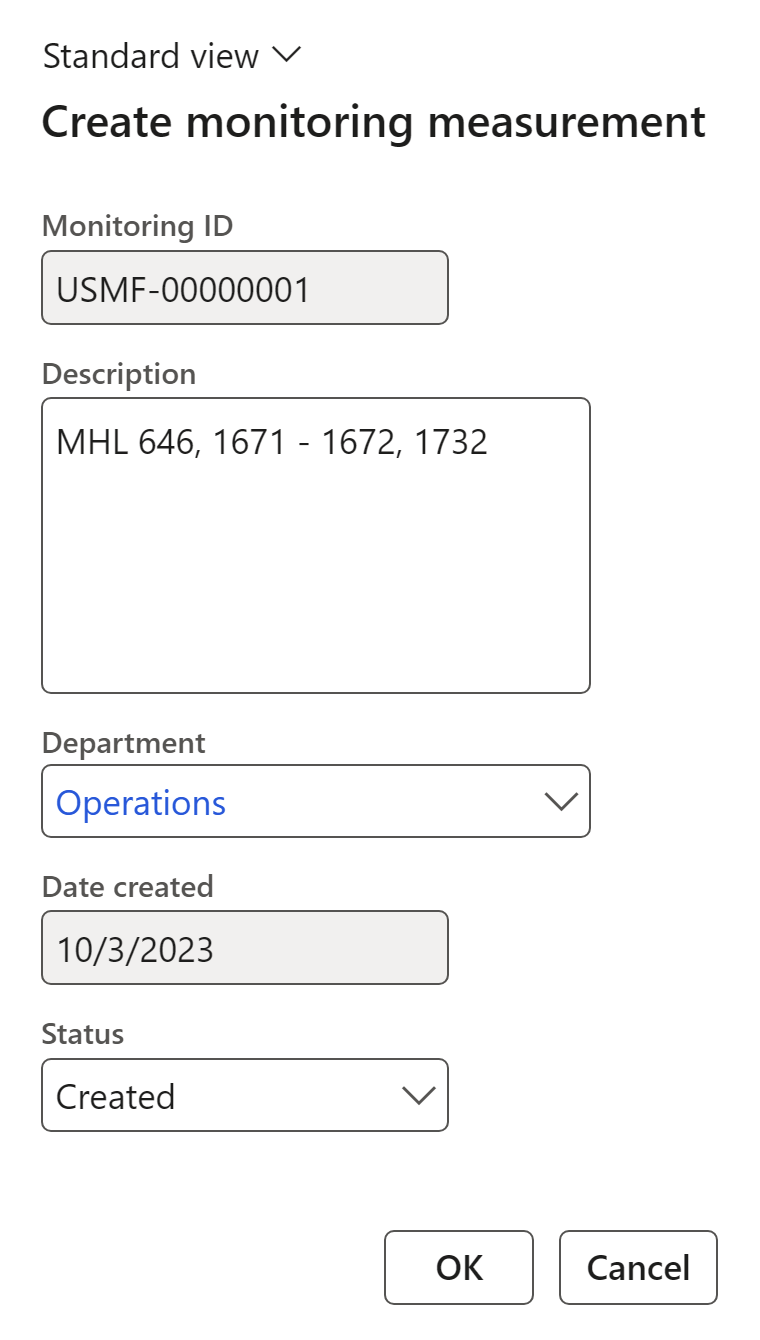
¶ Step 3.1: General Fast tab
Under the General Fast tab:
- Enter the Effective date for the measurement
- Select the relevant Department from the dropdown list
- Select the relevant Monitoring schedule from the dropdown list
- Select the relevant Project from the drop-down list (If applicable)
- The Month and Year selected on the Monitoring schedule (“header”), has to be the same as the Effective date selected on the Measurement
- The Department selected on the schedule, has to be the same as the Department selected on the Measurement
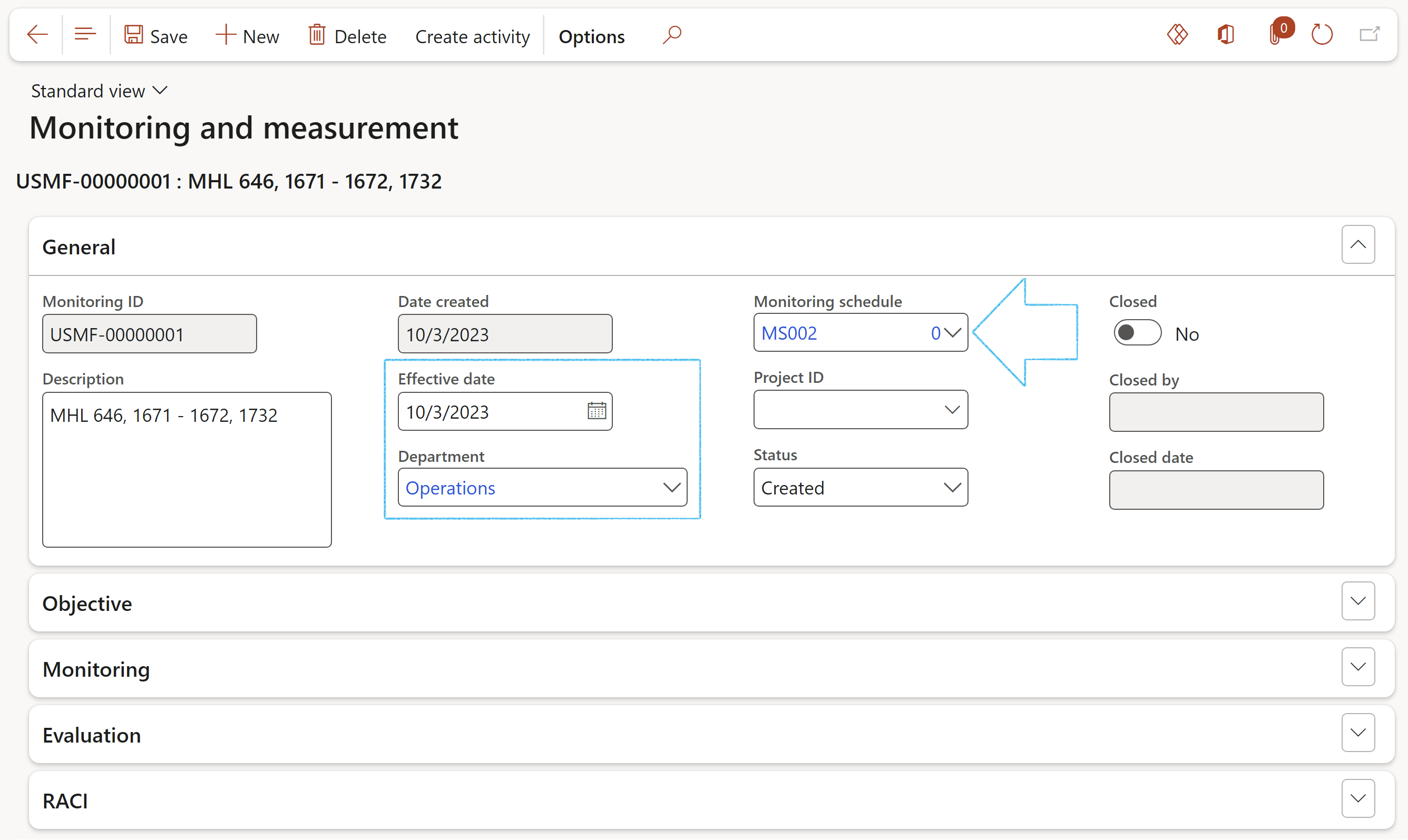
When the Closed slider is moved to Yes:
- The Closed date field will be populated with the current date
- The Closed by field will be populated with the logged in user’s name
- The record will be locked
¶ Step 3.2: Objective Fast tab
- Expand the Objective Fast tab
- Enter the Objectives in the box provided

¶ Step 3.3: Monitoring Fast tab
- Expand the Monitoring Fast tab
- Under the General Index tab:
- The user has the option to link an activity that has been created in D365 by selecting the relevant Activity number
- The Purpose field will be populated with the details on the selected Activity
- The Risk register, Risk line ID and Risk label will be populated with the details of the linked risk line
- Enter the Activity task in the box provided
- Enter the Element being evaluated in the box provided
- Enter the Method of evaluation in the box provided
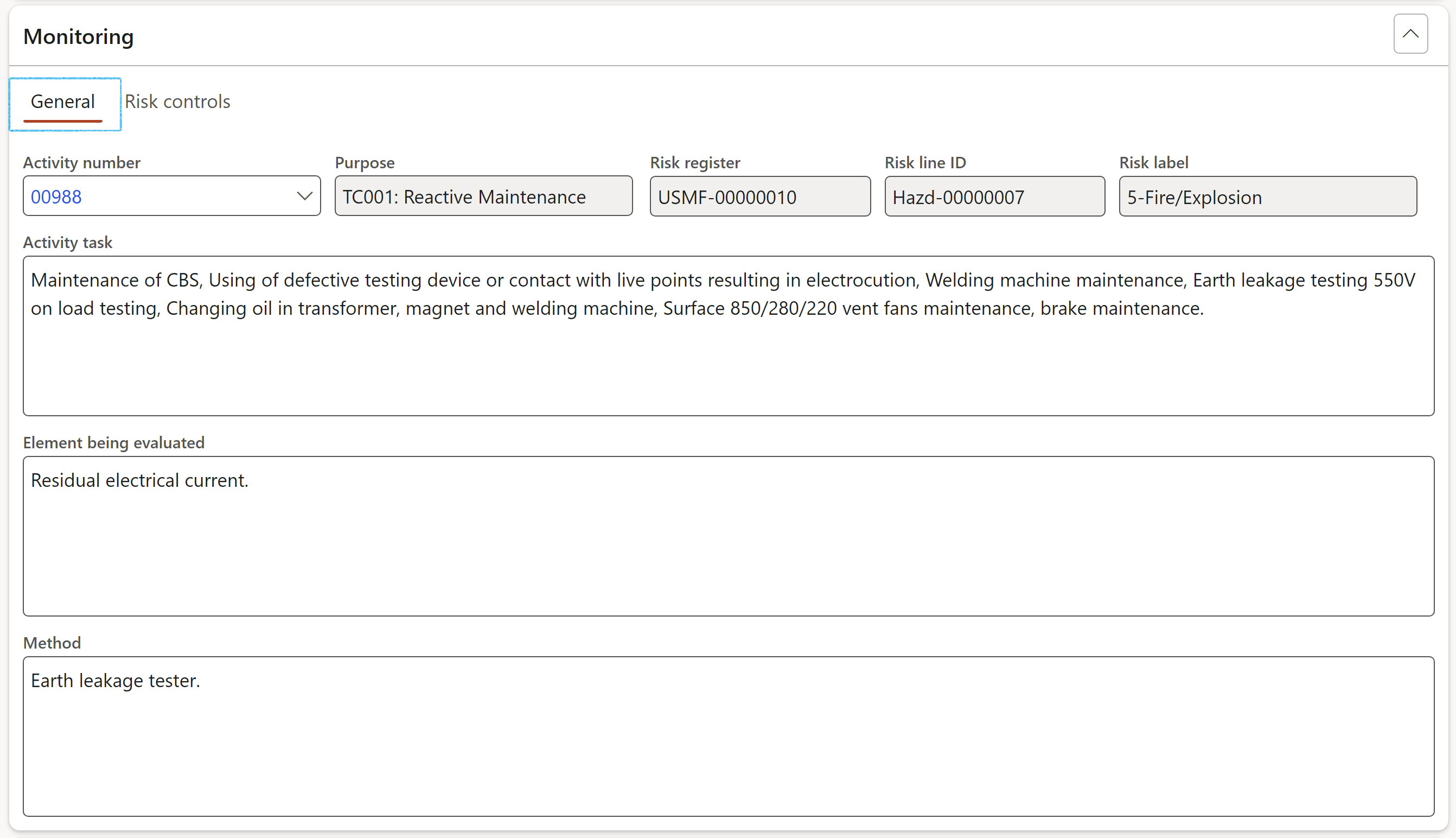
- Under the Risk controls Index tab:
- In the Button strip, click on the Add button
- Enter a Control description
- Select the relevant control Type from the dropdown list
- Select the relevant control Effectiveness factor from the dropdown list
- Select the relevant Cost type from the dropdown list (if applicable)
- Enter the Amount (if applicable)
- Select the relevant Currency from the dropdown list
- Enter the Risk impact in the box provided
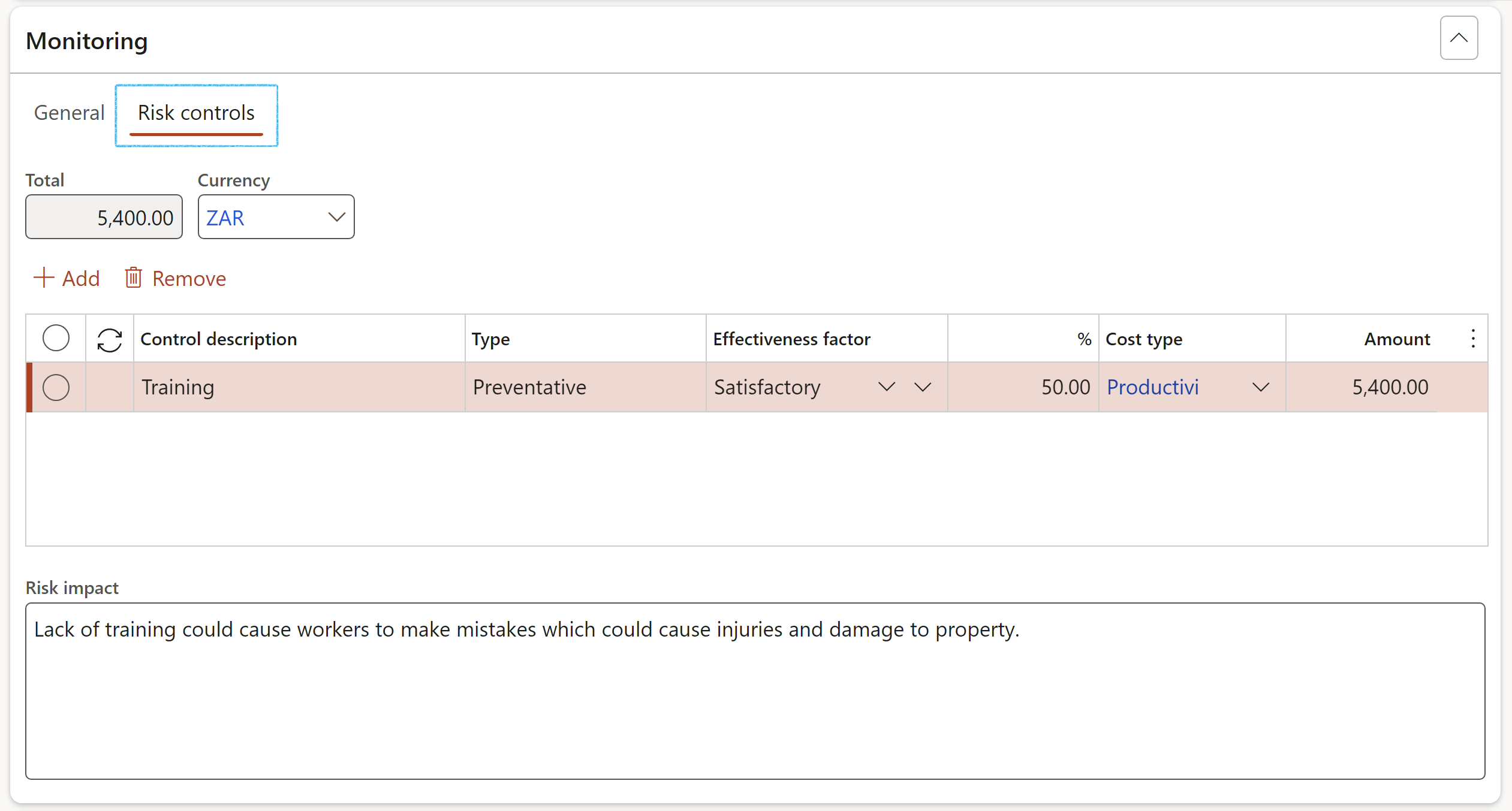
¶ Step 3.4: Evaluation Fast tab
- Expand the Evaluation Fast tab
- Select the Frequency of the evaluation from the dropdown list
- Enter the Performance indicator in the box provided
- Enter Performance detail in the box provided
- Enter Feedback detail in the box provided

¶ Step 3.5: RACI Fast tab
- Expand the RACI Fast tab
- Select the Employee responsible from the dropdown list
- Select the Employee accountable from the dropdown list
- Select the Employee consulted from the dropdown list
- Select the Employee informed from the dropdown list

Emails can be sent to selected workers under the RACI Fast tab. These workers must have a Primary email address
¶ Step 4: View Monitoring and measurement lines on the header
Go to: GRC > Performance > Monitoring schedule
- Select the relevant Monitoring schedule
- Expand the Monitoring and measurement lines Fast tab
- All the Monitoring and measurement lines, where the Monitoring schedule was selected under the General Fast tab on the Monitoring and measurement lines, will be displayed here (Step 2.1 above)
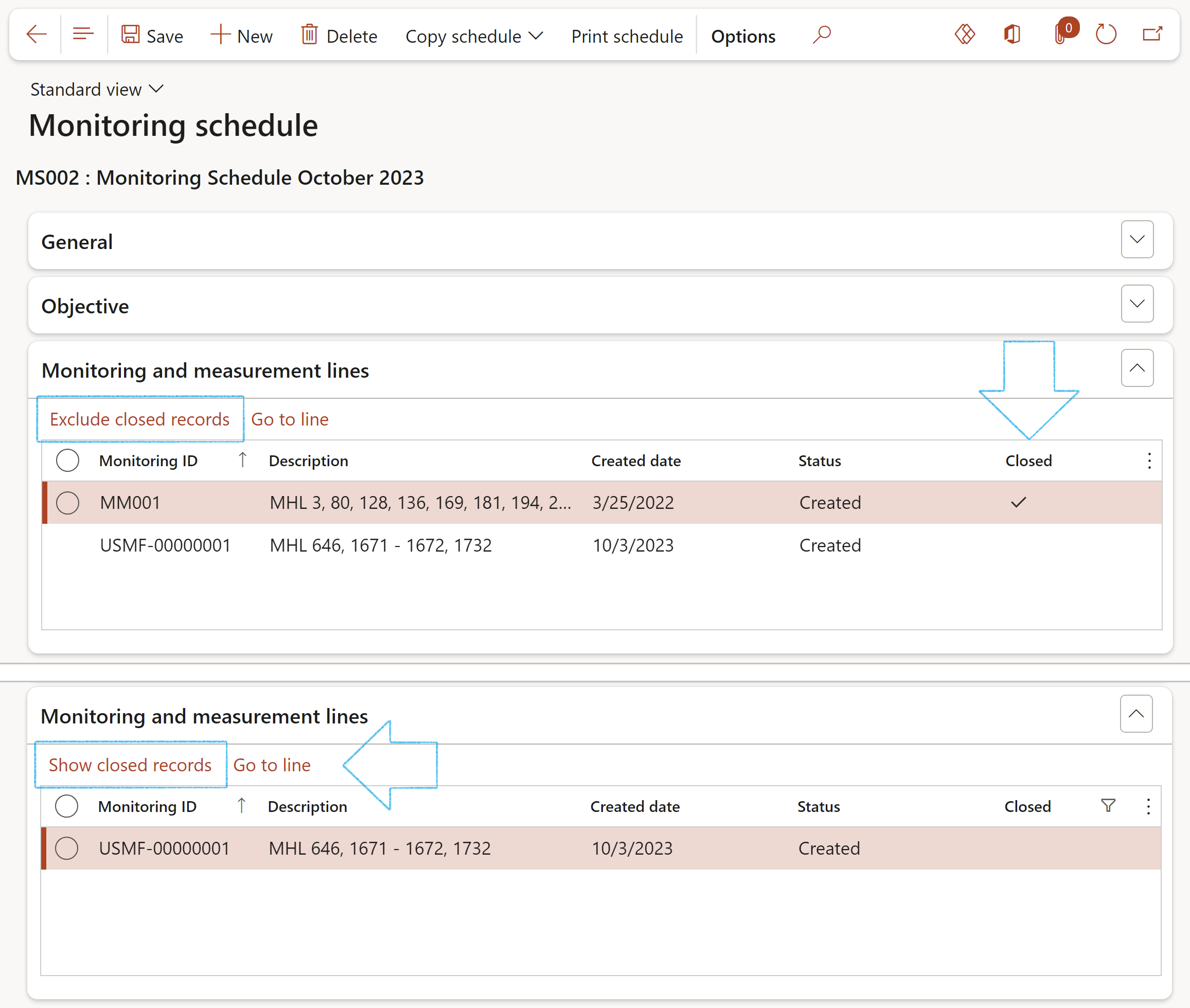
- The user can choose to Sow/Exclude closed records
- The user can go straight to the line by clicking on the Go to line button
¶ Step 5: Create activities from the Monitoring and measurement lines
Go to: GRC > Performance > Monitoring and measurement
- Select the relevant record
- On the Action pane, click on the Create activity button
- On the Create activity dialog:
- Select the relevant Category
- Enter a Description for the activity
- Select the Responsible person from the dropdown list
- Enter the Due date for the activity
- The user can choose to Create a new action plan for the activity
- Enter a Description for the new action plan
OR
- Add the activity to an existing Action plan
- Click on the OK button
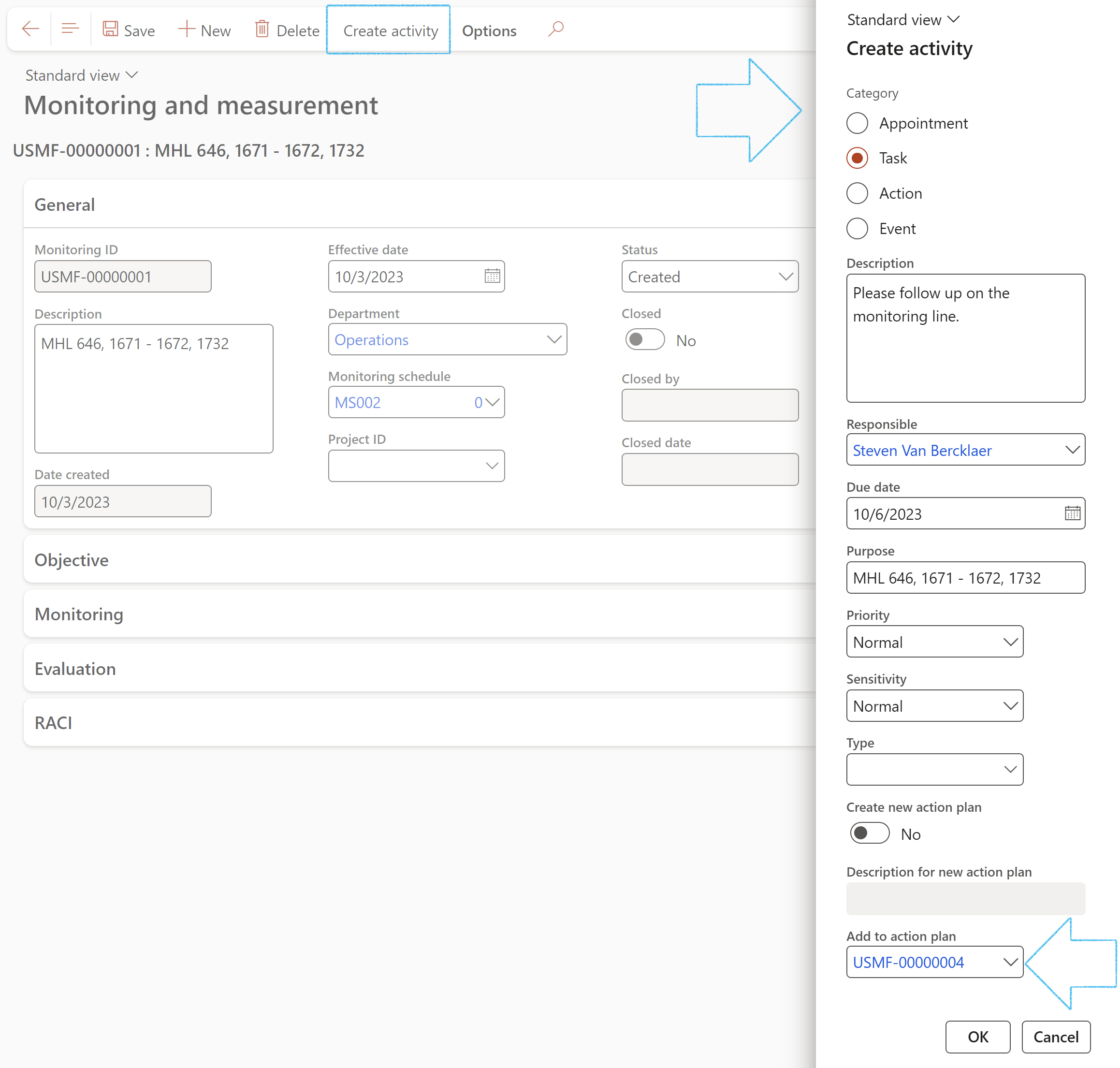
¶ Step 6: Copy the Monitoring schedule
Go to: GRC > Performance > Monitoring schedule
- Select the relevant Monitoring schedule
- On the Action pane, click on the Copy schedule button
- On the dialog, select the following for the new (copied) Monitoring schedule:
- New department
- New year
- New month
- Click on the OK button
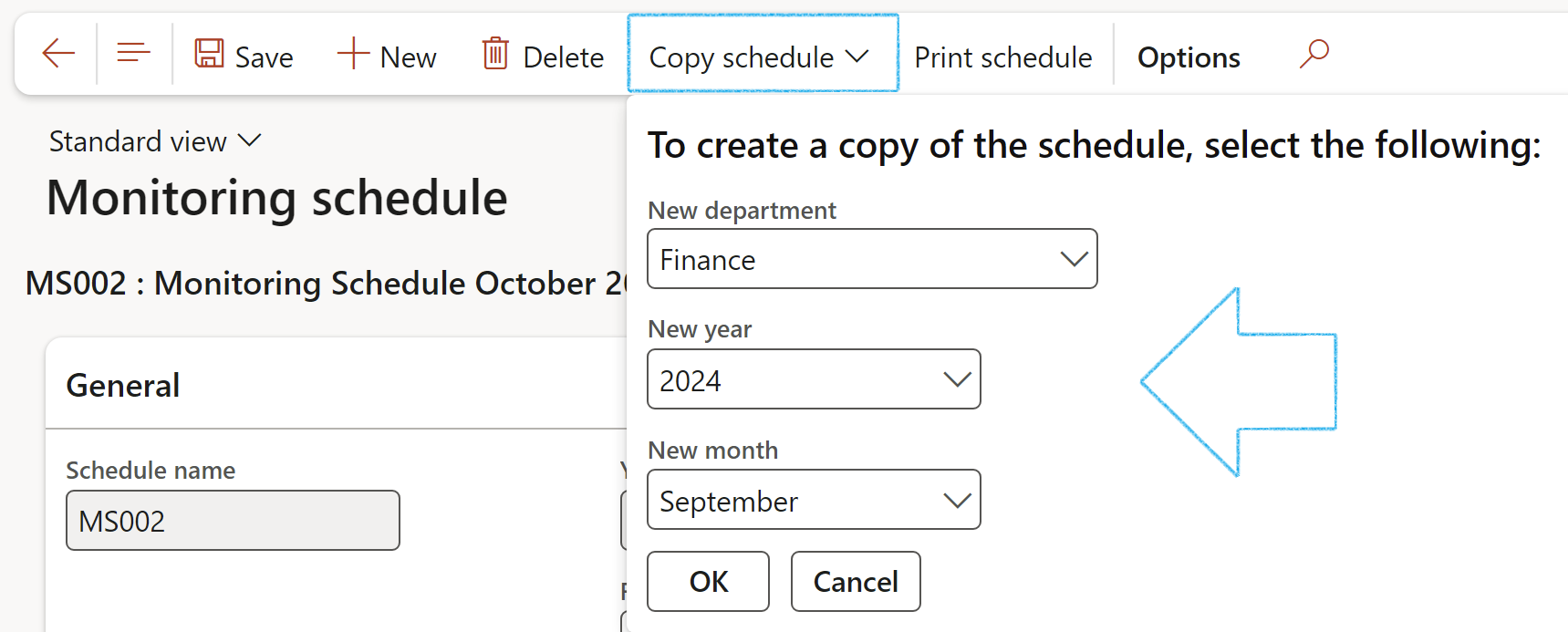
Only OPEN lines will be copied to the new monitoring schedule
- Change the Description (If required)
- Enter a new Review date
- Select the relevant Reviewed by person from the dropdown list
¶ Reporting
¶ Step 7: Print the Monitoring schedule report
Go to: GRC > Performance > Monitoring schedule
- Select the relevant Monitoring schedule
- On the Action pane, click on the Print schedule button
- On the dialog, select the following values:
- Year (Has to be the same as on the schedule that you want to print the report for)
- Month (Has to be the same as on the schedule that you want to print the report for)
- Department (Has to be the same as on the schedule that you want to print the report for, or can be left blank)
- The user can choose to Include the closed lines on the report
- Click on the OK button
